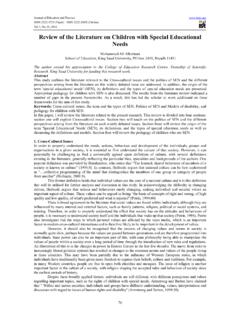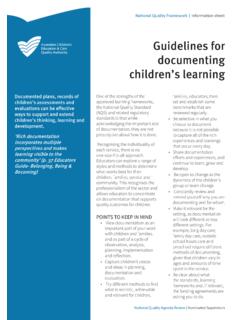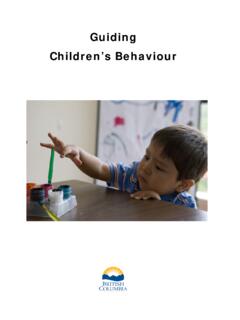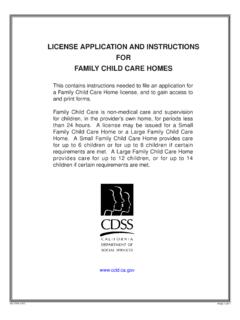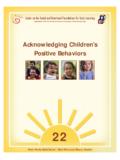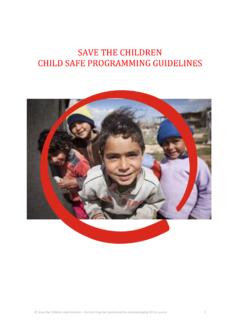Transcription of Ministry of Women, Children and Youth
1 Gender Equality,Women s empowermentand child wellbeingin EthiopiaMinistry of Women, Children and YouthGENDER EQUALITY, WOMEN S EMPOWERMENT AND CHILD WELLBEING IN ETHIOPIA UNICEF Ethiopia and Ministry of Women, Children and YouthAll rights reserved. Extracts may be published if the source is duly acknowledgedThis publication is available on the following websites: and Equality, Women s Empowerment and Child Wellbeing in Ethiopia is based on the Ethiopian Demographic and Health Survey Data Sets of 2000, 2005, 2011, and further information on this report please contact: Ministry of Women, Children and Youth , Box 1293, Addis Ababa, EthiopiaUNICEF Ethiopia, Box 1169; Email: Policy Research Institute, Email: citation:MOWCY, UNICEF Ethiopia and SPRI (2019): Gender Equality, Women s Empowerment and Child Wellbeing in and layout: UNON Publishing Services Section, Nairobi ISO 14001:2004-certifiedPrinted in Addis Ababa, Ethiopia by the ECA Printing and Publishing Unit.
2 ISO 14001:2004 certified. Printed on chlorine-free GENDER EQUALITY, WOMEN S EMPOWERMENT AND CHILD WELLBEING IN ETHIOPIA3 ContentsList of figures ..4 List of tables ..6 Foreword ..7 Acknowledgments ..8 List of acronyms ..9 Executive summary ..11 Purpose and aim ..11 Approach ..11 Key findings ..11 Policy action ..17 Introduction ..18 Background ..18 Purpose of the study ..18 Data and limitations ..19 Trends in gender equality ..22 Family planning ..33 Education ..36 Child protection and elimination of all forms of discrimination against women ..40 Resources, agency, and autonomy ..46 Control over sexual relations ..52 Trends in women s empowerment ..57 Women s empowerment and Children s wellbeing ..74 Recommendations ..80 References ..844 Figure 1 Trends in exclusive breastfeeding of Children under 6 months, by gender (%).
3 23 Figure 2 Trends in initiation of early breastfeeding for Children under 2 years, by gender (%) ..24 Figure 3 Trends in MAD among Children 6-23 months, by gender (%) ..24 Figure 4 Trends in stunting, wasting, underweight, and overweight among Children under five (%) ..25 Figure 5 Trends in stunting, wasting, underweight, and overweight among Children under five, by gender (%) ..25 Figure 6 Trends in undernutrition (BMI< ) of adolescents and adults, by gender (%) ..26 Figure 7 Trends in short stature among girls and women (age 15-49 years), by area of residence (%)..27 Figure 8 Trends in prevalence of iron deficiency/anaemia, by age and gender (%)..27 Figure 9 Trends in immunization, Children under five, by gender (%) ..29 Figure 10 Trends in healthcare seeking for Children under five, by gender (%) ..29 Figure 11 Trends in access to ANC services, women aged 15-49 years (%).
4 30 Figure 12 Trends in access to skilled birth attendance, women aged 15-49 years (%)..30 Figure 13 Trends in knowledge about HIV/AIDS prevention and transmission, adolescents and adults, by gender (%) ..31 Figure 14 Trends in MTCT knowledge, adolescents and adults, by gender (%) ..32 Figure 15 Trends in HIV prevalence, by gender (%) ..32 Figure 16 Trends in HIV testing, by gender and area of residence (%) ..33 Figure 17 Trends in knowledge of modern contraception methods, per cent of adolescents and adults who know at least one method, by gender (%) ..34 Figure 18 Trends in having an unmet need for family planning, women aged 15-49 years, by area of residence (%) ..35 Figure 19 Trends in exposure to family planning, adolescents and adults, by gender (%) ..36 Figure 20 Trends in school attendance, by age and gender (%).
5 37 Figure 21 Trends in delay in schooling, primary and secondary school, by gender (%) ..38 Figure 22 Trends in educational attainment of adolescents, mean of highest grade completed, by gender and area of residence ..39 Figure 23 Trends in educational attainment, highest educational level attained, adult women 20-49 years (right) and adult men 20-59 years (left) (%) ..39 Figure 24 Trends in illiteracy, adolescents and adults (%) ..40 Figure 25 Birth registration among Children under five, by area and region of residence, 2005 and 2016 (%) ..42 Figure 26 Trends in child marriage, girls aged 15-17 years, by area of residence (%)..43 Figure 27 Trends in age at first sexual intercourse, adolescents and adults (%)..43 Figure 28 Trends in teenage pregnancy, girls aged 15-19 years, by area of residence (%)..43 Figure 29 Trends in FGM incidence among adolescent girls and women (%).
6 44 Figure 30 Trends in attitudes towards FGM, adolescents and adults, by gender (%) ..45 Figure 31 Incidence of GBV, adolescents and adults, 2016 (%) ..45 Figure 32 Trends in attitudes towards GBV, adolescents and adults (%) ..46 Figure 33 Trends in employment, by age group and gender (%) ..47 Figure 34 Trends in sectors of employment, women (left), men (right) (%) ..48 Figure 35 Trends in allocation of household chores (fetching water) among household members, by age and gender (%) ..48 Figure 36 Trends in ownership of real estate, by gender (%)..49 Figure 37 Ownership and use of bank accounts and mobile phones, 2016 (%) ..50 ContentsGENDER EQUALITY, WOMEN S EMPOWERMENT AND CHILD WELLBEING IN ETHIOPIA5 Figure 38 Trends in women s exposure to media, by area of residence (%) ..50 Figure 39 Trends in women s decision-making power in the household, by area of residence (%).
7 51 Figure 40 Trends in decision-making power over husband s earnings (%) ..51 Figure 41 Trends in women s decision-making power about usage of contraception, women aged 15-49 years (%) ..51 Figure 42 Trends in control over sexual relations, by area of residence husband s earnings (%) ..52 Figure 43 Framework for women s empowerment ..54 Figure 44 Trends in empowerment in the Education domain, women in union (%) ..57 Figure 45 Trends in empowerment in the Education domain by urban/rural area, women in union (%)..58 Figure 46 Trends in empowerment in the Economic domain, women in union (%) ..58 Figure 47 Trends in empowerment in the Economic domain by urban/rural area, women in union (%)..59 Figure 48 Trends in empowerment in the Familial/Interpersonal domain, women in union (%) ..59 Figure 49 Trends in empowerment in the Familial/Interpersonal domain by urban/rural area, women in union (%).
8 60 Figure 50 Trends in empowerment in the Attitudes towards wife-beating domain, women in union (%) ..60 Figure 51 Trends in empowerment in the Attitudes towards wife-beating domain by urban/rural area, women in union (%) ..61 Figure 52 Trends in empowerment, women in union (%) ..63 Figure 53 Trends in empowerment of women in union by urban/rural area (%) ..63 Figure 54 Trends in empowerment of women in union, by wealth quintiles (%)..64 Figure 55 Trends in empowerment in the Economic domain by area of residence, women not in union (%)..64 Figure 56 Trends in empowerment in the Economic domain by area of residence, women not in union (%)..65 Figure 57 Trends in empowerment in the Education domain, women not in union (%) ..65 Figure 58 Trends in empowerment in the Education domain by area of residence, women not in union (%).
9 66 Figure 59 Trends in empowerment in the Attitude towards wife-beating domain, women not in union (%) ..66 Figure 60 Trends in empowerment in the Attitude towards wife-beating domain, women not in union (%) ..67 Figure 61 Trends in empowerment of women not in union (%) ..68 Figure 62 Trends in empowerment of women not in union by urban/rural area (%) ..68 Figure 63 Trends in empowerment of women not in union by wealth quintile (%) ..696 List of tablesTable 1 Parameters used for trend analysis of gender equality and women s empowerment ..21 Table 2 Proportion of women and men with their names on the title deeds of the house or land owned, 2016 ..49 Table 3 List of domains and indicators to measure women s empowerment ..56 Table 4 Relationship between domains of women s empowerment, ordered logistic regression results, women in union.
10 62 Table 5 Trends in women s empowerment by region, women in union ..64 Table 6 Relationship between domains of women s empowerment, ordered logistic regression results, women not in union ..67 Table 7 Trends in empowerment of women not in union by region ..69 Table 8 Parameters used to measure Children s wellbeing across different dimensions ..72 Table 9 Average marginal effects of the probability of the child being deprived in each dimension of wellbeing ..74 GENDER EQUALITY, WOMEN S EMPOWERMENT AND CHILD WELLBEING IN ETHIOPIA7 ForewordEthiopia has come a long way in improving the situation of women and Children . The country achieved six of the eight Millennium Development Goals (MDGs) and is trying to address the remaining challenges within the framework of Sustainable Development Goals (SDGs). With the leadership of the Ministry of Women, Children and Youth (MOWCY), UNICEF and partners have supported this Gender Equality, Women s empowerment and child wellbeing study in Ethiopia.











